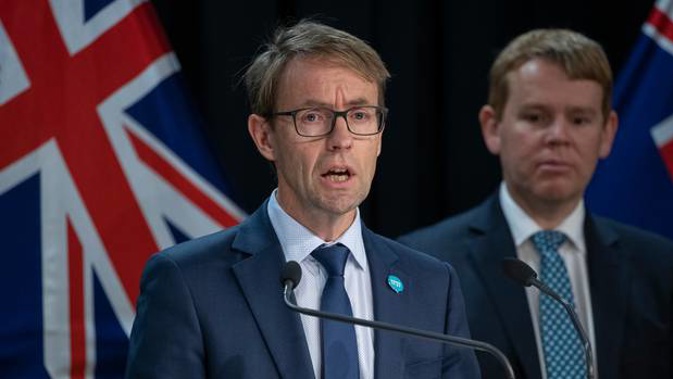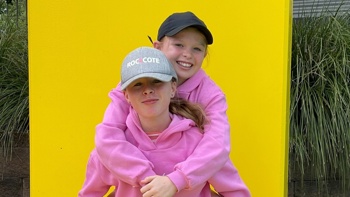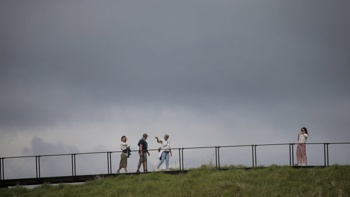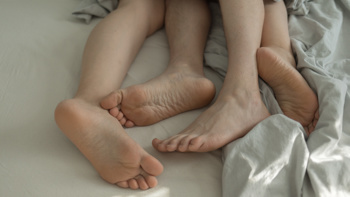
Auckland could eventually move to alert level 1 without the "complete elimination" of Covid-19, Health Minister Chris Hipkins has told MPs.
National MPs are finally getting their chance this morning to grill director general of health Ashley Bloomfield and Hipkins on the Covid-19 response.
The pair are appearing before Parliament's health select committee.
When Parliament's dissolution was pushed out following the new election date of October 17, National's health spokesman Shane Reti asked for the select committee to reconvene so the party MPs had an opportunity to ask questions of Bloomfield.
The committee chairwoman, Labour MP Louisa Wall, agreed following NZ First supporting National's request.
Bloomfield was asked about the weekend error on the government's Covid website that suggested everyone in south and west Auckland should get etsted for Covid regardless of whether they had symptoms.
The director general said there was no advice to have 700,000 people in south and west Auckland to be tested. "One or two key words were either left out or changed."
He said the error was a process issue and is being rectified.
The words should have said people in those areas at risk of worse outcomes should get a test.
Hipkins said some families were under "much greater strain than they were pre-Covid", and young people were also "feeling the pressure".
Additional mental health support for schools is being looked at, he said.
Bloomfield said it was a "rapidly evolving" situation, and that created anxiety.
Informing the public about what was happening was a major contributor to reducing anxiety levels, he added.
Demand for telehealth services tended to spike near D-Days, Hipkins said.
Latest lockdown decision
Hipkins told committee MPs that Cabinet had followed Bloomfield's health advice for the latest outbreak, which was for Auckland to go into alert level 3 and the rest of the country to go into alert level 2.
Bloomfield said several options were put forward, but the preferred option was the one that Cabinet adopted.
Cabinet also followed health advice for deciding to keep those settings after the first three days.
On August 24, Bloomfield advised that Auckland could move to alert level 2 with additional measures in place, including the 10-person restriction on social gatherings and mandatory masks on public transport.
Hipkins said Cabinet receives advice from a number of departments, including health and Treasury, about 24 to 36 hours before D-Day.
"Things can changed during that time. Typically you get one or two more cycles of test results."
Contact-tracing information was also vital, including those cases where there is no clear epidemiological link.
Why is the rest of NZ still at alert level 2?
National MP Shane Reti asked why the South Island was still at alert level 2, and Hipkins said there was reasonably free movement, including direct flights from Auckland to Queenstown.
That meant if the South Island was at level 1 and Aucklanders could travel to a large social gathering in the South Island that would "defeat the purpose" of the different alert level settings.
"We were quite comfortable that everybody would be at alert level 2 with a few extra protections for Auckland," Hipkins said.
Cases with no link to other cases would be cause for concern and may see a move back up alert levels, he said.
"Our ultimate goal is to avoid further level 3 lockdowns as much as we possibly can."
Hipkins said the maintenance worker at the Rydges Hotel, who was isolated and close contacts tested, was quickly contained, and if that had been the only case, a lockdown would not have been necessary.
The Auckland cluster, though, had many unknowns including the source, which still remains unknown.
Bloomfield added that the number of cases yesterday was higher, but they were all connected to the current Auckland cluster so they were not as concerning as unconnected cases.
"Are you absolutely sure we have no holes in our border?" Reti asked.
"There's no such thing as having no holes in the border," Hipkins replied, but he added that the protections were as robust as they could be.
"Our risk settings are very low. Can they be lower? We are always looking for ways to make them lower."
What will it take for Auckland to move to level 1?
Hipkins said the country could move to level 1 while there were still cases in the community, and there didn't need to be "complete elimination".
Advice on moving to level 1 was yet to be considered, he added.
Bloomfield said the current outbreak was the largest cluster and it had a long tail.
Putting positive cases and their families into quarantine was helpful because most transmission happened within households.
"That will reduce the length of the tail in the case of this particular outbreak."
He had yet to be asked for advice about moving to level 1. The first step will be moving Auckland to a full level 2.
Not requiring children under 12 to wear masks was based on advice from the World Health Organisation, Hipkins said.
Mask-wearing was not as culturally comon as it was in places like Taiwan, but he hoped people would still wear masks in some circumstances at level 1.
Contact tracing capacity
Hipkins said 350 close contacts can be contacted a day, and that can be scaled up to 500 with "reasonably short notice", and even further to 1000, which was the recommendation in Ayesha Verrall's report.
He said imposing a lockdown depended on the nature of an outbreak, and the current one required a lockdown given it was in the community, the source was unknown, and events including church services and bus journeys were involved.
Given that, there was no hard and fast rule about when future lockdowns might be used.
Hipkins said there was a two-week standown period for international air crew when they came home, and they were also tested.
A new air border border was still being finalised, he added, to get the risk profile "even lower".
The only domestic flights leaving from the international terminal were chartered flights for overseas returnees.
He said the Government was working with Apple and Google to improve digital contact tracing tools.
Act leader David Seymour asked Hipkins: "Did you think to ask South Islanders would they rather be at level 1 and have no Aucklanders?"
Hipkins replied that was not considered.
Travel movements in and out of Auckland
Asked about exemptions for travel in and out of Auckland at level 3, Hipkins said it was the first time there were different alert level settings for different regions.
That meant the same exemptions didn't necessarily apply from the last time, he said.
"There were a set of different processes required there, and whenever you do that it's always going to take a wee while to get that up to speed."
Bloomfield said the process was set up "quite quickly", and halfway through the lockdown there were 100 people working on the process.
"We continued to improve it," he told MPs.
"For some people there were some delays and that was not ideal, but we did have to stand up a new process."
/cloudfront-ap-southeast-2.images.arcpublishing.com/nzme/D7Q7RWKYL5FUJETITUZRRIGA6M.jpg)
Queues at the police checkpoints were reduced as the process was expedited, Bloomfield said.
Higher risk workers to face weekly Covid tests
Hipkins said at the end of the week a schedule will be released of how often border-facing workers - including airport staff and port workers - will be tested.
Higher risk workers should be tested weekly, he said.
Lower risk workers will be tested fortnightly, and workers on the periphery will be tested monthly.
"The shipping port is the most complex of all of those operations ... we're working through that process."
Bloomfield said airport workers who were customer-facing and port workers going out to ships were higher risk.
Workers were also checked for symptoms daily, he said.
There might be times when workers didn't have to wear masks, such as if a worker was having their morning tea, but in general they all wore masks if there were customers about.
Hipkins said testing was the last line of defence and the protective measures, including PPE and physical distancing, were also important.
Neither Hipkins nor Bloomfield could say whether the Rydges hotel maintenance worker was wearing a mask when he used the lift shortly after an infected guest.
Hipkins said each managed isolation and quarantine (MIQ) facility had 'hot' and 'cold' zones. PPE was needed for hot zones and there were clear protocols for how to move between zones, including supervision for putting on and taking off PPE.
Port workers weren't being tested as quickly as the airport or MIQ workers, which was why the second round of testing of the port workers was taking longer.
A more regular presence at the ports was being worked on, he added.
There were thousands of port workers with several different employers, and different types of workers including drivers who didn't come into contact with cargo.
Bloomfield said most of the returnees testing positive in MIQ facilities mostly came from day three tests or after they became symptomatic. The number who tested positive on day 12 was "small".
National MP Gerry Brownlee said that reinforced the view that day three testing should be compulsory, but Bloomfield said only people who tested positive hadn't had a day three test, which showed overall the system was working well.
Bloomfield said the 14-day period in isolation, in addition to testing on around day three and day 12, was the best approach -"not zero risk" - and meant the likelihood of someone taking Covid-19 from MIQ into the community was "very, very low".
Asked how long it might have to remain in place, Bloomfield advised it should be kept in place to keep Covid-19 out of the community.
Reti has been asking questions of the Government about the voluntary day three testing of overseas arrivals, and is likely to bring that up this morning.
From July 18 to August 24, 11,647 day three tests were done for 12,240 returnees.
Some reasons for not being tested include being a child under six months old, refusing a test, or having a medical condition that didn't allow a test.
Minister for Managed Isolation and Quarantine Megan Woods said the day three test was only one line of defence and the fact there had been no proven transmission outbreak from an MIQ facility showed the system was working.
The source of the current outbreak remains unclear.
Reti will also ask about why the border-facing workers weren't being regularly tested, even though that was clearly stated as the Government's testing strategy in June.
The Ministry of Health had a very different testing strategy to the one signed off by Cabinet, and Heather Simpson and Sir Brian Roche have now been brought in to ensure the strategy is being properly rolled out.
All MIQ staff are currently being tested for a second time to find clues about the current outbreak.
In the first round, from August 21 to 27, 97 per cent of MIQ staff were tested and none were positive. The ones who weren't tested were either on leave or not at a facility during that time period.
National has also recently released its Covid border policy, which includes a requirement for overseas arrivals to test negative before being allowed on a flight to New Zealand.
Take your Radio, Podcasts and Music with you









